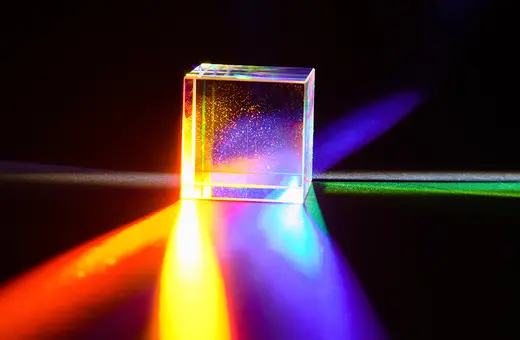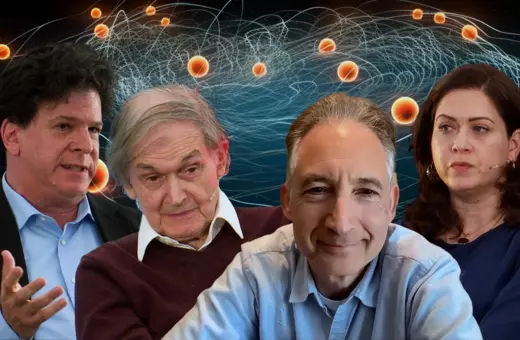Two particles affecting one another faster than light seemed unimaginable but there is no denying the facts. This mystery has inspired much skepticism from lay folk and Nobel prize winners alike. But how do we solve this? Emily Adlam argues, that retrocausality, the idea the future can affect the past, is the key to solving this quantum enigma.
One of the most famous and puzzling features of quantum mechanics is the fact that it exhibits what Einstein called ‘spooky action at a distance, - correlations between measurements performed on particles very far apart in space. Now, of course distant correlations in and of themselves are nothing surprising. For example, suppose I take a pair of socks out of my drawer, separate them, and then send one off to my friend Alice in London and the other to my friend Bob in Auckland. If my friends observe the socks and then compare their results and discover that they both have socks of the same colour, there’s no mystery about that - the socks are the same colour because of a common cause in their shared past, i.e. the fact that they both came from the same pair. But the correlations appearing in quantum mechanics are special because they cannot be explained in this way. For example, distant quantum correlations are typically demonstrated in a ‘Bell experiment,’ in which I prepare a pair of quantum particles and send one to Alice and another to Bob, and then Alice and Bob both choose a measurement and perform that measurement on their particle. A famous theorem due to the physicist John Bell tells us that in this scenario, correlations explained by a common cause in the past must obey a certain inequality - but it turns out that we can choose preparations and measurements in quantum mechanics which lead to a violation of Bell’s inequality. This seems to indicate that Alice’s decision to make one measurement rather than another has an instantaneous influence on Bob’s particle and thereby affects the results that Bob obtains in his own measurement, regardless of how far apart they are.
___
It’s troubling to think that the deep structure of quantum mechanics violates such a foundational principle of relativity.
___
These instantaneous nonlocal influences are troubling to many physicists, not least because they seem strongly in tension with our understanding of spe- cial relativity. The problem is that special relativity tells us that there is no fact of the matter about what is ‘instantaneous’ - to determine whether two distant events are simultaneous we must choose a reference frame relative to which we can assess simultaneity, but special relativity ultimately says that no reference frame is preferred and therefore there are no observer-independent facts about simultaneity. Now, quantum nonlocality doesn’t produce any observable contra- dictions with this relativistic principle, since the instantaneous influences work in a subtle way which means they are only detectable after the results of the measurements on both particles have been compared, and therefore we can’t ex- perimentally detect any preferred reference frame. But still, if the influences are instantaneous there must be some preferred reference frame, even if observers like us can’t detect it, and it’s troubling to think that the deep structure of quantum mechanics violates such a foundational principle of relativity. This seems particularly problematic if we hope to one day unify quantum mechanics and relativity in a theory of quantum gravity, for it seems unlikely we will be able to do this if the two theories are incompatible in such a foundational way.





















Join the conversation